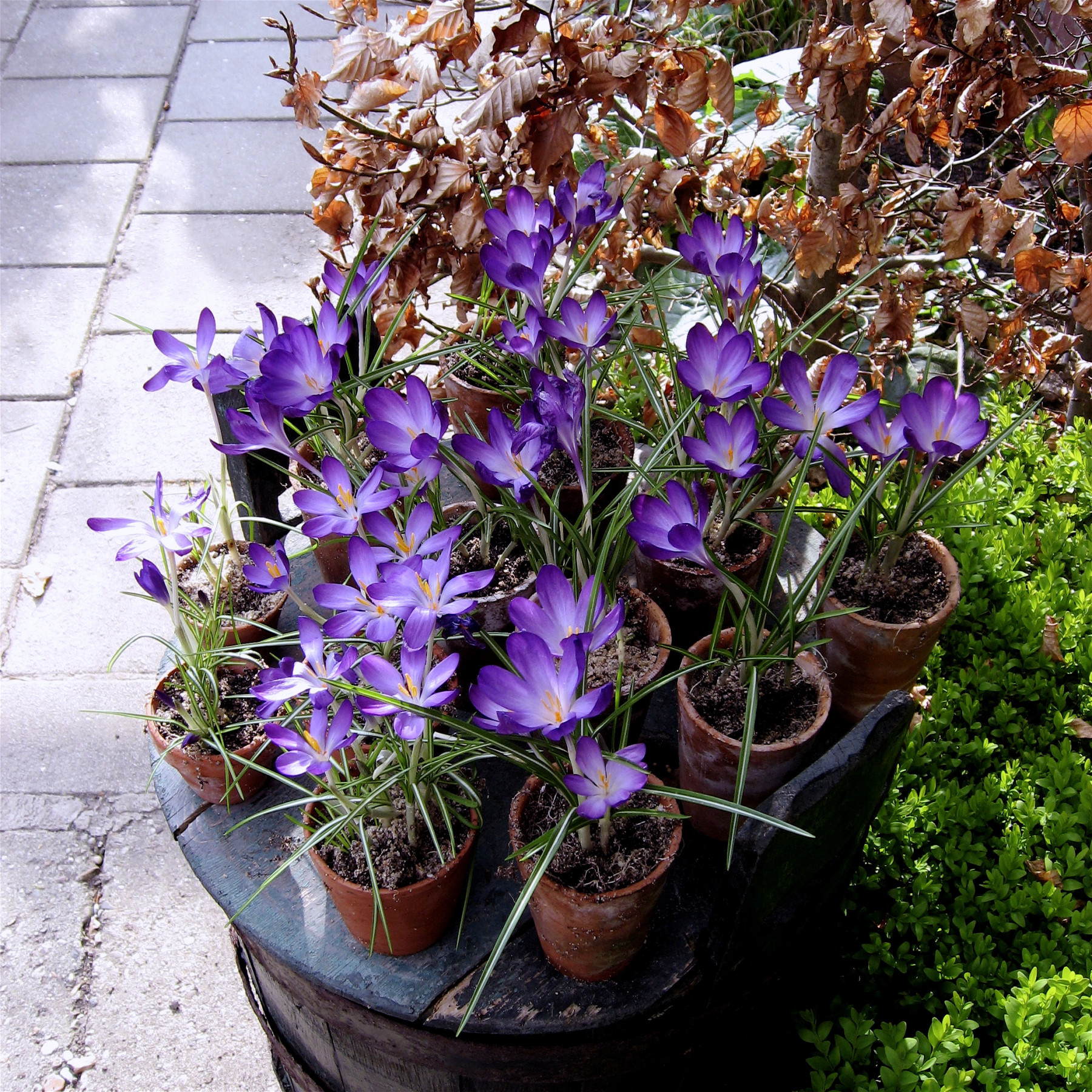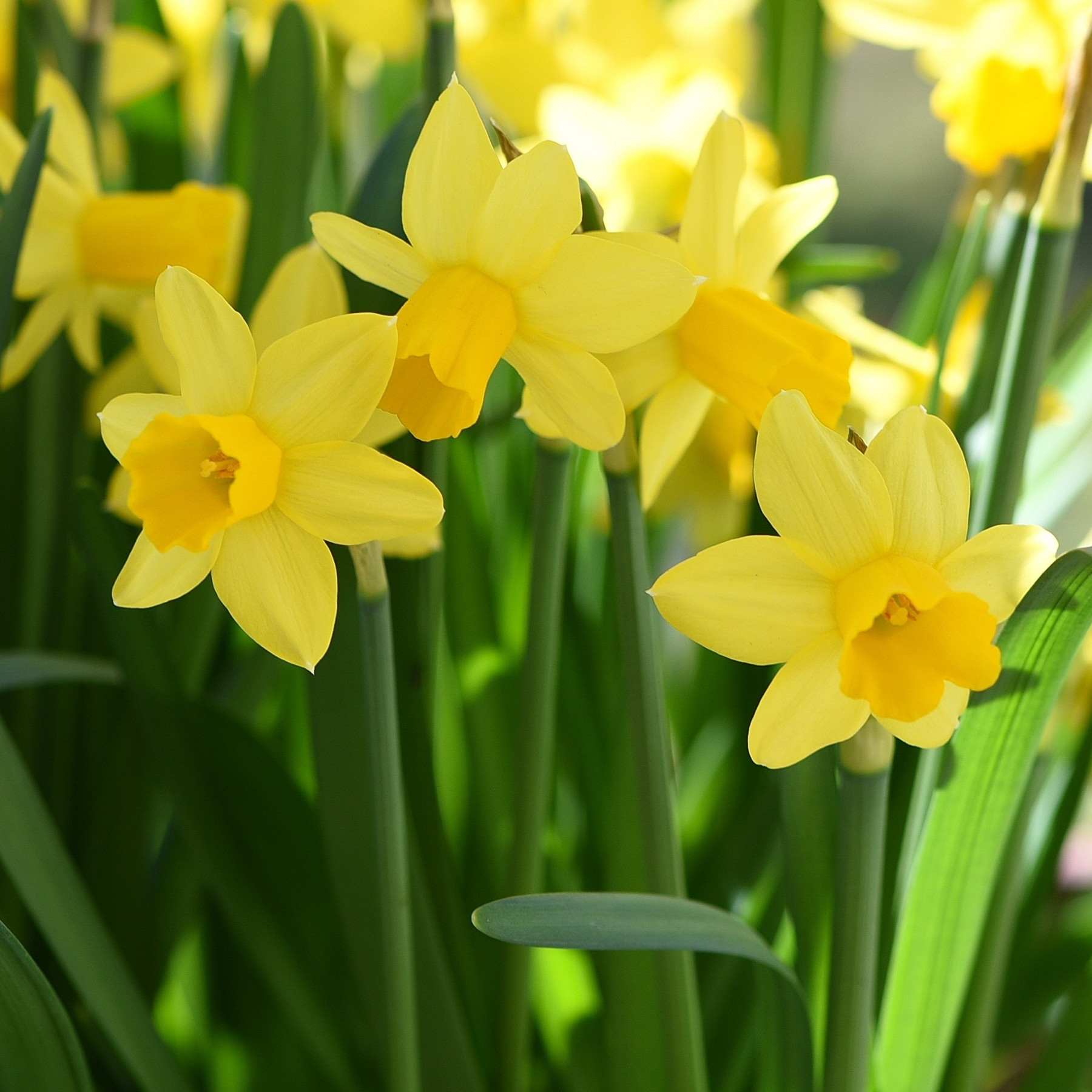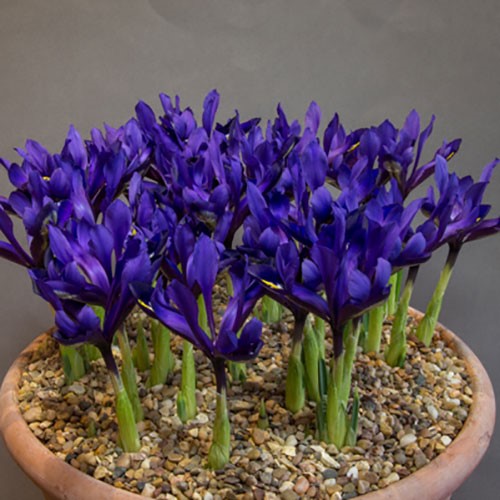
I love to garden throughout the year and kneeling down, with a trowel in my hand, seems to get me a direct line to God and I’m not too fussy about which one it is either. I can solve my problems, my friends’ problems and my family’s problems when I’m weeding. The only time my faith wavers is during the dreary month of November but, as the month draws to a close, I can see the light at the end of the tunnel. The Winter Solstice is approaching and, after that auspicious day, my hibernating garden will begin to reawaken.
If you’ve got a Hartley greenhouse, you can accelerate into spring by forcing miniature bulbs, blossom and some spring woodlanders into precocious flower. It was a technique employed by Victorian Head Gardeners, charged with the task of decorating the big house before the days of supermarket flowers flown in from places like Kenya. These cellophane-wrapped bunches have a carbon footprint larger than a herd of elephants and the flowers have often been bombarded with chemicals too. I’ll grow my own, thank you!
Forcing flowers in greenhouses, or getting them to flower in warmer outdoor conditions, has driven a lot of plant breeding in the past because early cut flowers have always sold for a premium. The mild climate of the south-west of England was perfect for early daffodils, for instance, and some of the small fields on the Isle of Tresco are still used for narcissi today. I once visited in early December and the buds were just beginning to break into a sea of pallid-yellow.
In the 1940s and 1950s a Cornish daffodil grower named Alec Gray, of Treswithian Daffodil Farm near Camborne, tried to produce earlier flowering daffodils. He used early-flowering Spanish species and his much taller cut-flower varieties. It backfired somewhat, because all of Alec Gray’s worthy seedlings were short in stature so not suited to cutting. Gray’s work was very beneficial to gardeners however, because he produced early-flowering miniature daffodils that were perfect for the garden. His most famous variety was ‘Tête-à-Tête’, a double-headed daffodil launched in 1949. A Dutch bulb grower once told me that this is still the most widely grown daffodil variety in commerce.

Gray recorded, in his 1955 book Miniature Daffodils, that ‘Tête-à-Tête’ came from a self-seeded pod of Narcissus x cyclataz from “the only seed this hybrid every produced” following a late spring and hot summer. There were three seeds in that pod and the other two produced ‘Quince’ (1953) and ‘Jumblie’ (1952). These miniature narcissi generally produce earlier flowers and, if brought into a greenhouse or warm room in bud, they open earlier. Their shorter stems make them very weather resistant in the garden too.
Alec Gray’s daffodil farm was a short distance away from Camborne Station, so his flowers could get to Covent Garden Flower Market early in the morning, only hours after they were picked. Further along the track, Cleveland violets and Devon Pinks were also loaded on to night trains. Violets were sold to Londoners for a ha’penny a bunch in the later years of the 19th century and some 200 acres near Dawlish were planted with them. I once spoke to a Cleveland resident who remembered the fragrance of freshly-picked violets wafting down the platform and the carriages. Whetman Pinks, situated in the prettiest Devon coombe just up from Dawlish, sent their pinks to market right up until foreign competition made it unprofitable.
French nurseries were also taking advantage of their own speedy rail network and there was plenty of demand for cut flowers in Paris in the mid-19th century. Victor Lemoine’s nursery in Nancy was founded in 1849 and the nursery continued under three generations. Victor (1823-1911) was part nurseryman and part florist and he used to force lilac into early flower and then sell it. He was particularly interested in double flowers, because they lasted longer in the garden and vase. His double-red potentilla ‘Gloire de Nancy’ is still grown today.
The town of Nancy was put under curfew during the Franco-Prussian war (1870-1871) and Victor turned his attention to breeding better double lilacs using a rather straggly, double-flowered tree lilac in his own garden. By the time the nursery closed in 1968, three generations of the Lemoines had named 214 cultivars of Syringa vulgaris.
The nursery raised a purple-lilac named ‘Charles Joly’, but perhaps the nursery’s most famous lilac is a fragrant double-white named ‘Madame Lemoine’. It was named for Victor’s wife Marie Louise Anna Lemoine in 1890, after Victor’s death. Victor Lemoine has already developed poor eyesight and unsteady hands by his early fifties, due to his hard work on the nursery. Marie Louise was eleven years younger than him and more physically fit, so she went climbed up the ladder to spread the pollen on the pistils, instead of him. Their first seedlings flowered in 1876. Most gardens will contain a plant raised by Victor Lemoine and he was the first foreigner to receive the Veitch Memorial medal from the RHS.
Lilacs are highly prized by cut flower ladies, because they produce their flowers in May, just as spring turns to summer. There are lots of winter flowers that can be picked and placed in the warm to encourage early flower. I have gathered small twigs of Prunus mume ‘Beni-chidore’ for its strident pink flowers held on dark branches. I have seen huge vases, picked from larger gardens. Fragrant wintersweet (Chimonanthus praecox) and winter honeysuckle (Lonicera fragrantissima) pick well in bud, before unfurling in warmth. If I can find a winter-flowering iris, picked from Iris unguicularis and a sprig or two of winter jasmine ( Jasminium nudiflorum) I can make a small posy.

You’ll find lots of potted bulbs in garden centres and they can be placed into a greenhouse for a short while and then placed a cool part of the house or near an outside door. So, if you see a potful of crocus, miniature iris, or muscari for sale snap it up. Hyacinths and ‘Paperwhite’ daffodils last far longer in a cool room, or porch, and this will preserve the perfume. The fragrance alters in warmth and become sickly and cloying.
If you’re starting with bulbs next autumn, keep them cool until the foliage appears and then bring them into gentle warmth. My favourite forced flower is lily of the valley, Convallaria majalis, because it’s fragrant and dainty. It can be invasive, so I don’t allow it free rein in my woodland borders. However, it’s one of the best plants to force in a greenhouse. Grow it outdoors and bring it into warmth once the leaves appear. A top dressing of moss adds some magic and makes you feel that spring is on the way.



